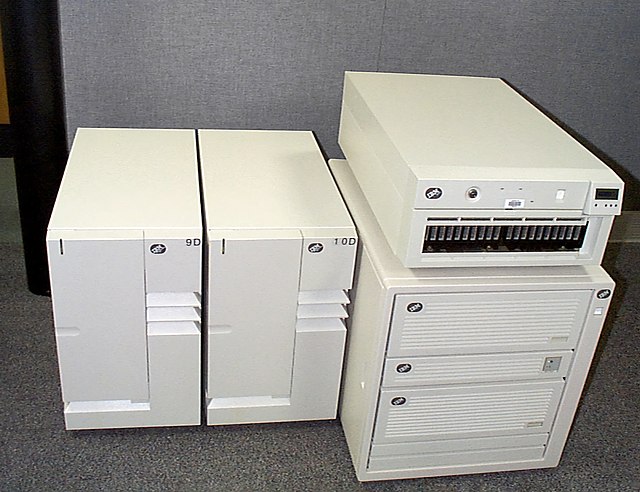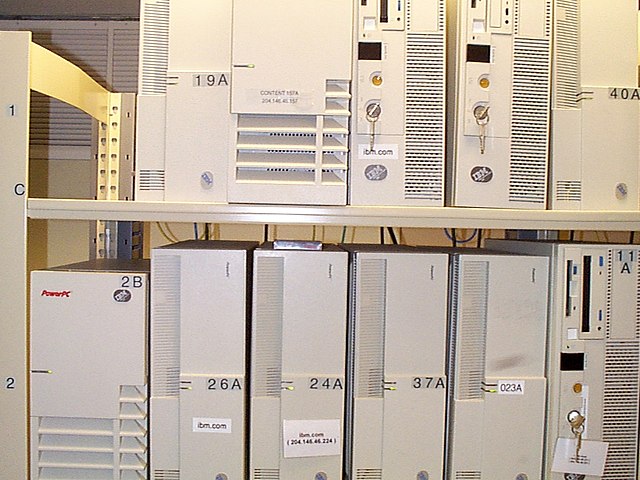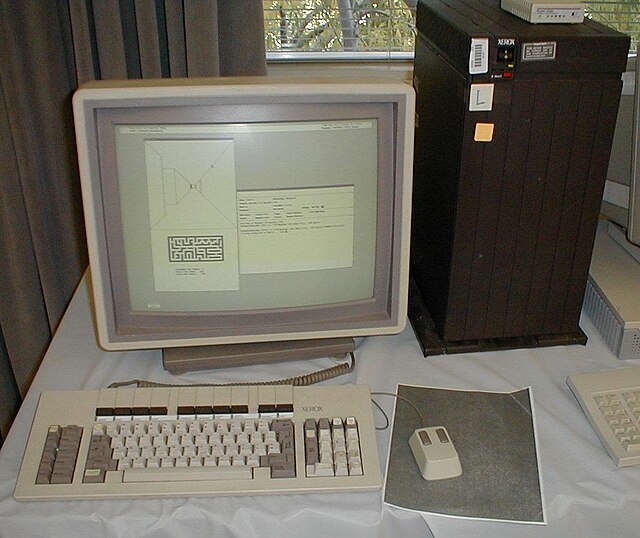The RISC System/6000 (RS/6000) is a family of RISC-based Unix servers, workstations and supercomputers made by IBM in the 1990s. The RS/6000 family replaced the IBM RT PC computer platform in February 1990 and was the first computer line to see the use of IBM's POWER and PowerPC based microprocessors. In October 2000, the RS/6000 brand was retired for POWER-based servers and replaced by the eServer pSeries. Workstations continued under the RS/6000 brand until 2002, when new POWER-based workstations were released under the IntelliStation POWER brand.
IBM RS/6000
AIX RS/6000 servers running ibm.com in early 1998
RS/6000 C10 small server
RS/6000 type 7012-320
A workstation is a special computer designed for technical or scientific applications. Intended primarily to be used by a single user, they are commonly connected to a local area network and run multi-user operating systems. The term workstation has been used loosely to refer to everything from a mainframe computer terminal to a PC connected to a network, but the most common form refers to the class of hardware offered by several current and defunct companies such as Sun Microsystems, Silicon Graphics, Apollo Computer, DEC, HP, NeXT, and IBM which powered the 3D computer graphics revolution of the late 1990s.
Tim Berners-Lee created the World Wide Web at CERN in Switzerland on the NeXTcube workstation.
Early Xerox workstation
HP 9000 model 425 workstation running HP-UX 9 and Visual User Environment (VUE)
HP 9000 model 735 running HP-UX and the Common Desktop Environment (CDE)








